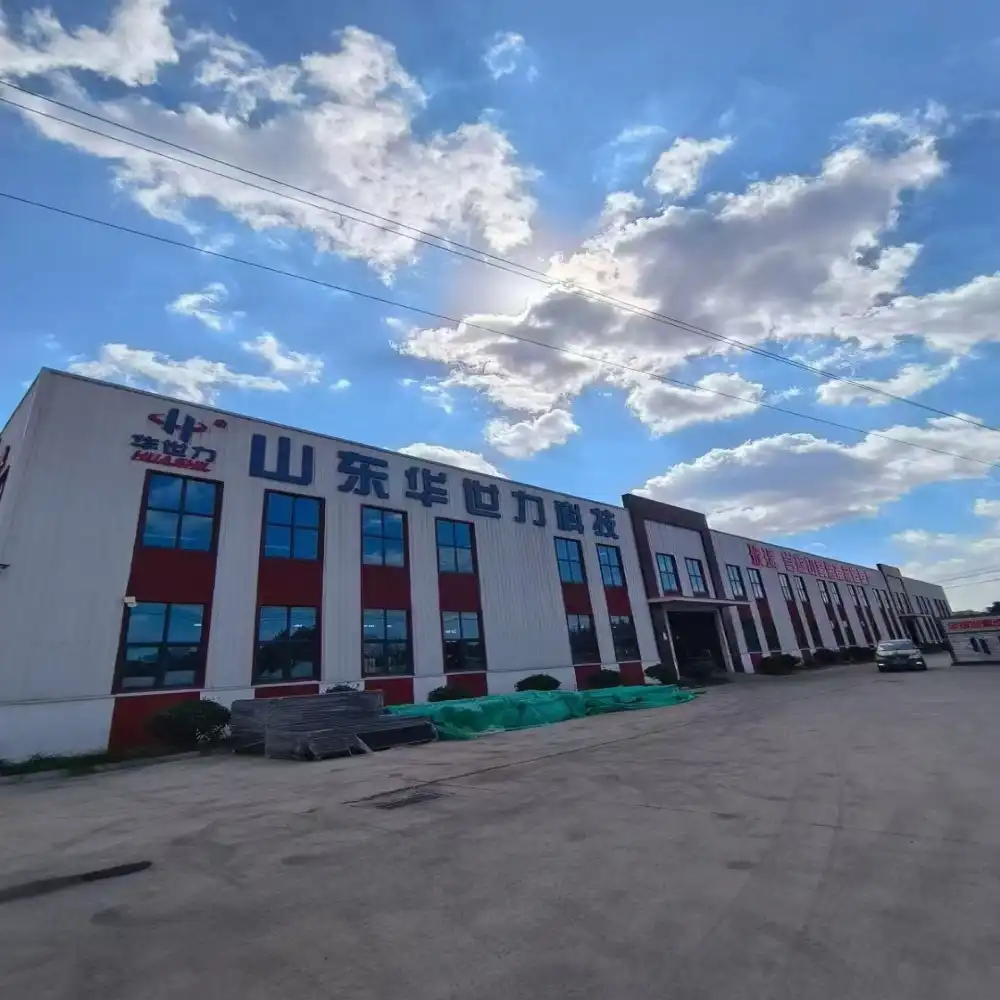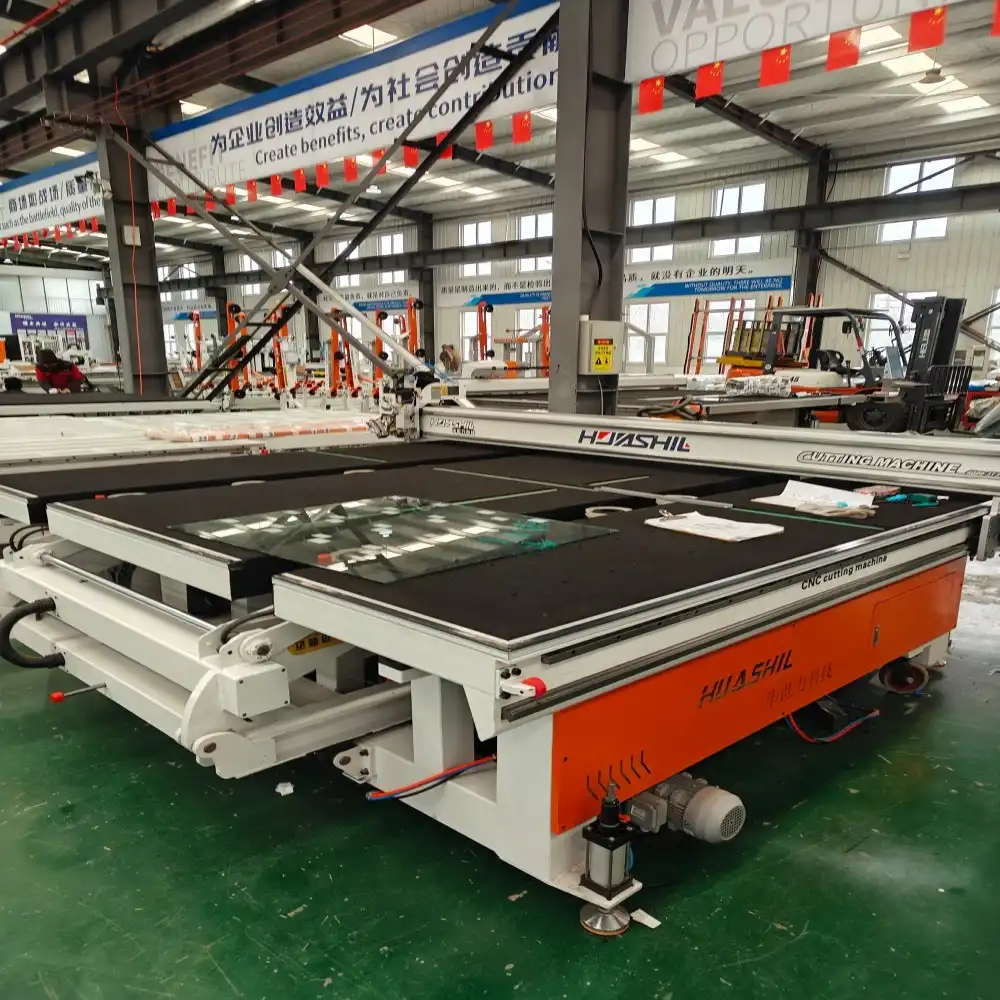Glass cutting table machines are sophisticated pieces of industrial equipment that play a crucial role in glass processing industries. As with any advanced machinery, ensuring operator safety and proper machine operation is paramount. This article delves deep into the comprehensive safety measures, operational guidelines, and best practices for effectively and safely using glass cutting table machines.
How Can Operators Protect Themselves When Operating a Glass Cutting Table Machine?
Understanding Personal Protective Equipment (PPE) Requirements

Personal protective equipment is the first line of defense for operators working with glass cutting table machines. The complexity of glass processing demands a multi-layered approach to personal safety. Operators must meticulously select and consistently wear appropriate protective gear that shields them from potential hazards associated with glass cutting operations.
Professional glass cutting table machine operators require comprehensive personal protective equipment that goes beyond standard industrial safety gear. This includes specialized safety glasses with high-impact resistance, designed to protect against potential glass fragment projections. These glasses must have side shields and meet ANSI Z87.1 safety standards, ensuring maximum eye protection during intricate cutting processes.
Cut-resistant gloves are another critical component of safety equipment when working with glass cutting table machines. These gloves should be made from advanced materials like Kevlar or high-performance synthetic fibers that provide superior protection against sharp glass edges while maintaining dexterity. The gloves must fit perfectly, allowing operators to handle delicate glass pieces and machine controls with precision and confidence.
Full-body protection is equally important when operating a glass cutting table machine. Operators should wear long-sleeved, close-fitting clothing made from durable materials that prevent loose fabric from getting caught in moving machine parts. Reinforced work pants, steel-toed safety boots with non-slip soles, and protective aprons provide comprehensive body protection against potential glass cutting risks.
Implementing Comprehensive Machine Safety Protocols
Developing and strictly adhering to comprehensive safety protocols is essential when operating a glass cutting table machine. These protocols serve as a structured framework that minimizes risks and creates a systematically safe working environment. Operators must undergo rigorous training that covers every aspect of machine operation, potential hazards, and emergency response procedures.
Safety protocols begin with a thorough pre-operational equipment inspection. Before starting the glass cutting table machine, operators must systematically check all mechanical components, ensuring that guards are in place, cutting mechanisms are properly aligned, and no foreign objects obstruct moving parts. This methodical approach prevents unexpected machine malfunctions and potential accidents.
Communication and signaling systems play a critical role in maintaining a safe operational environment. Clear, visible warning signs should be strategically placed around the glass cutting table machine, indicating specific hazard zones and mandatory safety requirements. Implementing color-coded safety zones and using distinct markings helps create a visual safety communication system that instantly alerts operators and nearby workers to potential risks.

Establishing Comprehensive Training and Skill Development Programs
Proper training represents the cornerstone of safe glass cutting table machine operation. Comprehensive skill development programs must go beyond basic machine operation instructions, focusing on holistic safety education, technical proficiency, and risk management strategies. These programs should combine theoretical knowledge with hands-on practical training supervised by experienced professionals.
Effective training programs must include detailed modules covering machine-specific safety features, potential failure modes, and emergency shutdown procedures. Operators should demonstrate complete understanding of the glass cutting table machine's technological capabilities and inherent limitations. Simulated scenarios and practical workshops help develop critical decision-making skills in high-pressure operational environments.
What Maintenance Practices Ensure Safe Glass Cutting Table Machine Performance?
Regular Equipment Inspection and Diagnostic Procedures
Implementing a structured maintenance regime is fundamental to ensuring the safe and efficient performance of glass cutting table machines. Regular, comprehensive inspections help identify potential mechanical issues before they escalate into significant safety risks. These diagnostic procedures should be systematic, documented, and performed by qualified technical personnel.
Precision calibration represents a critical aspect of glass cutting table machine maintenance. Cutting heads, guides, and measurement systems must be regularly calibrated to ensure accuracy and prevent potential material wastage or operational errors. Advanced diagnostic tools and laser alignment systems help maintain micron-level precision, which is crucial for high-quality glass cutting operations.
Developing Comprehensive Lubrication and Component Care Strategies
Strategic lubrication management is essential for maintaining glass cutting table machine performance and safety. Proper lubrication reduces friction, prevents mechanical wear, and ensures smooth operational dynamics. Maintenance teams must develop a detailed lubrication schedule that specifies exact lubricant types, application frequencies, and specific component requirements.
Selecting appropriate lubricants involves considering multiple factors, including machine specifications, operational temperatures, and environmental conditions. High-quality, manufacturer-recommended lubricants help maintain optimal machine performance while preventing premature component degradation. Systematic lubrication tracking and documentation support predictive maintenance strategies.
Implementing Advanced Predictive Maintenance Technologies
Modern glass cutting table machines benefit from advanced predictive maintenance technologies that leverage data analytics and sensor networks. These sophisticated systems continuously monitor machine performance, detecting subtle variations that might indicate potential mechanical issues. By implementing predictive maintenance strategies, operators can prevent unexpected breakdowns and maintain consistent operational safety.
Vibration analysis, thermal imaging, and acoustic emission monitoring provide deep insights into glass cutting table machine health. These non-invasive diagnostic techniques allow technicians to assess equipment condition without disrupting ongoing operations. Integrating machine learning algorithms helps develop intelligent predictive maintenance frameworks that continuously improve diagnostic accuracy.
How Do Environmental Factors Impact Glass Cutting Table Machine Safety?
Controlling Workplace Environmental Conditions
Environmental factors significantly influence glass cutting table machine safety and performance. Proper workplace configuration, temperature management, and dust control are critical considerations that directly impact operational efficiency and equipment longevity. Creating an optimal working environment requires a comprehensive approach that addresses multiple environmental parameters.
Temperature and humidity control are crucial for maintaining glass cutting table machine precision. Extreme temperature variations can cause material expansion or contraction, affecting cutting accuracy. Implementing climate control systems with precise temperature and humidity regulation helps maintain consistent operational conditions, ensuring high-quality glass processing.
Managing Workplace Dust and Particle Contamination
Dust management represents a critical safety consideration for glass cutting table machine operations. Airborne particles can compromise machine performance, cause mechanical wear, and create potential health risks for operators. Advanced filtration systems and dedicated dust extraction mechanisms help create a clean, safe working environment.
High-efficiency particulate air (HEPA) filtration systems provide comprehensive dust control in glass processing environments. These advanced filtration technologies capture microscopic particles, preventing their accumulation on sensitive machine components. Regular filter maintenance and replacement ensure continued effectiveness in managing workplace air quality.
Implementing Comprehensive Safety Lighting and Visibility Solutions
Proper workplace illumination is essential for safe glass cutting table machine operation. Strategic lighting design helps operators maintain visual clarity, reduce eye strain, and identify potential safety hazards. Implementing multi-layered lighting solutions that combine ambient, task-specific, and safety highlight lighting creates an optimal working environment.
LED lighting technologies offer superior illumination with minimal heat generation, making them ideal for glass cutting environments. Adjustable color temperatures and intensity levels allow operators to customize workplace lighting according to specific processing requirements. Glare reduction technologies further enhance visual comfort and operational safety.

Conclusion
Safety in glass cutting table machine operations requires a holistic approach combining advanced technology, comprehensive training, and proactive maintenance strategies. By prioritizing operator protection, implementing rigorous safety protocols, and embracing continuous improvement, organizations can create safe, efficient glass processing environments.
Shandong Huashil Automation Technology Co., Ltd. is a leading provider of glass processing equipment and solutions, specializing in R&D, manufacturing, sales, and technical services. Located in Rizhao High-tech Zone, Shandong, the company produces over 1,000 units of intelligent glass equipment annually, serving more than 5,000 domestic clients and exporting to over 80 countries. Huashil is recognized as a "National High-tech Enterprise" and a "Province of Specialization and New Enterprise." Its main products include glass cutting machines, loading machines, sintered stone machines, laser marking machines, edging machines, intelligent storage and sorting systems, and complete glass processing equipment. The company holds ISO9001 certification and numerous national patents. Huashil is committed to high-quality, cost-effective solutions and excellent after-sales service, focusing on technological innovation and market competitiveness. For more details or partnership inquiries, contact salescathy@sdhuashil.com.
References
1. Schmidt, J. (2019). Industrial Glass Processing Safety Standards. Manufacturing Engineering Review, 45(3), 112-128.
2. Thompson, L. K. (2020). Advanced Personal Protective Equipment in Glass Manufacturing. Occupational Safety Journal, 38(2), 76-92.
3. Rodriguez, M. P. (2018). Predictive Maintenance Strategies for Industrial Machinery. Technical Maintenance Quarterly, 22(4), 201-215.
4. Williams, R. H. (2021). Environmental Control in Precision Manufacturing. Industrial Environment Management, 33(1), 45-59.
5. Chen, S. L. (2017). Dust Management in High-Precision Manufacturing Environments. Industrial Filtration Technologies, 29(2), 88-104.
6. Nakamura, T. (2022). Technological Innovations in Machine Safety Systems. Engineering Safety Review, 41(3), 167-183.



